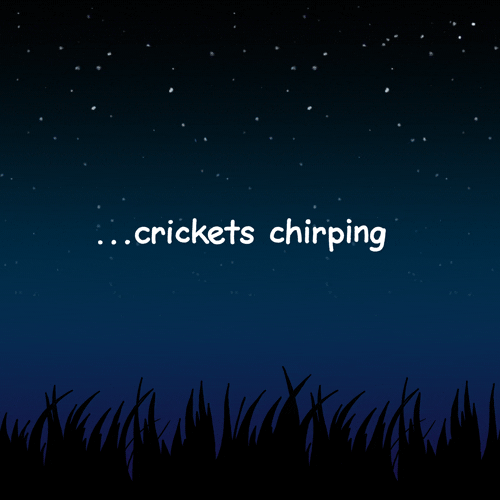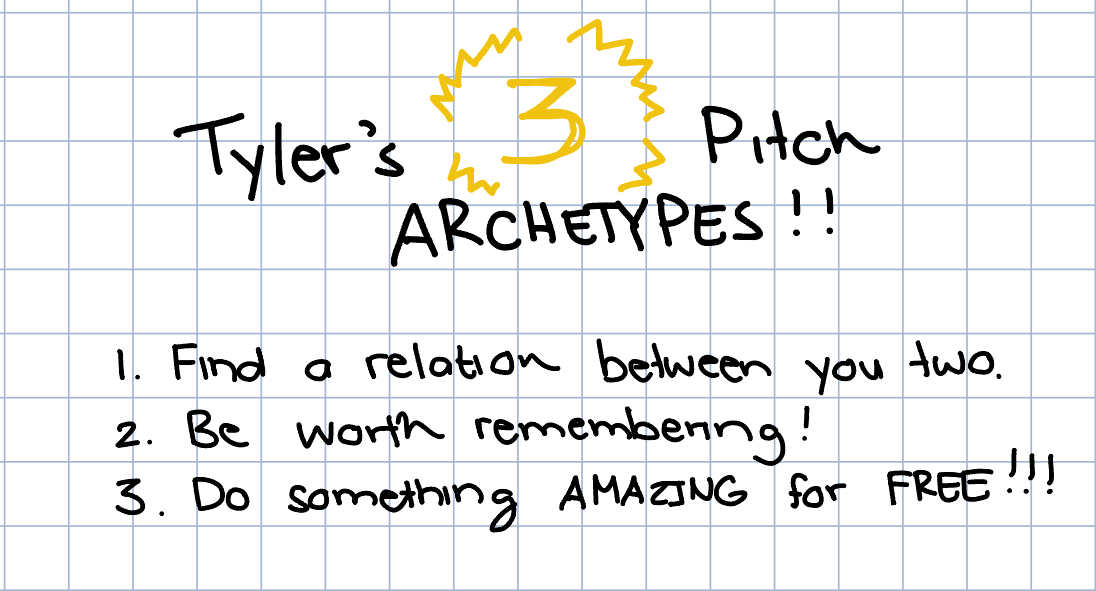How I Networked into Tech to Land Internships, Mentors, and Unforgettable Secrets 👨🏽🏫 👩🏼🏫 🧑🏾🏫
You've all heard it. Networking is important, but what does that mean? You follow some general tips and it doesn't work. In this month's issue, I'll give you the secret sauce that no one talks about!
👋🏽 Hey! Thanks for checking in with this month’s issue of Tyler Talks Product!
For those of you that are new here, here are some issues you may have missed that I think are worth the read:
How 15-Mins Resets My Entire Day ☀️🌑 | Lucus' Productivity Corner - What is Capture Mode 📸
The Most Overlooked Product Management Skill 😱: Design Principles 🎨
Decoding Metrics as a Product Manager 📊 | Lessons from an Intern and a Senior PM @ Microsoft
Thanks for reading Tyler Talks Product! Subscribe for free to receive new posts and support my work.
Request a Topic 🎙
Click the button below if you have a topic in mind that you want to explore in product management! It may be the next issue :)
When I started my undergrad, freshmen would bombard seniors on how to get summer internships. There was one answer to rule them all: networking. When I first heard the answer, it didn’t click for me. It felt like a sick joke; all it took was to talk to people? “So you’re telling me, I reach out to a random stranger, talk to them, and they hire me,” it seemed like the weirdest exchange. But what did I know? So I gave it a try.
I sent as many LinkedIn requests and emails as my hands could type for the day, and I would wait. Any minute now. The calls would be rolling in.
Nothing. I didn’t get a single email: a 0% return rate. I was dejected for sure, but my stubbornness led to an obsession to understand what networking was and how to become an expert networker (if such a title even exists)! I eventually learned how to network and do so in a way that felt comfortable to me.
Today, networking has opened up so many opportunities that I was super fortunate to experience. Although it led me to some internships and full-time opportunities, I’m thankful for the people (sometimes halfway around the globe) I randomly met because of a message that caught their eye.
If you want to meet cool people, I can show you how to do that. I can’t promise anything more.
There are many overly complex definitions of networking. In its simplest form, networking is when someone reaches out to another person for some reason. The reason could be because they have a story that intrigues you, you’re a fan of the same sports team, their essays are mind-blowing, or they can help you along your professional career.
The biggest fallacy most students think about when it comes to networking is that you only reach out to someone who can help you get a job. An approach like this is the worst mindset when talking to people. If I had to have a golden rule in meeting new people, it’s to NEVER EXPECT ANYTHING IN RETURN.
Networking is the best when it’s just two people exchanging ideas. There’s a great feeling when you meet someone new that has a similar vibe to you. Try looking for these interactions instead of looking for a job. In the long run, you’ll thank yourself that you did.
Saying to network with people you respect is pretty general advice; it’s hard to know who to reach out to when you don’t know where to look. You may have some big names in your mind: Bill Gates, Casey Neistat, or Rick Rubin. However, a more sophisticated system of thinking may be more helpful.
When looking for people you may want to network with, I created a matrix that gauges two factors that help aid my search for people to learn from. The first component is how interesting the person is to me; this quality is subjective and changes often. For example, a product manager may find someone who is a PM at TikTok to be interesting and find an accountant at the same company not. It’s relative to what you value.
The second factor is locality, which is how reachable the person is to you. If a person you see on LinkedIn goes to the same school as you and they are someone you want to talk to, that’s a definite yes to reach out to that person (Quadrant 1).
Additionally, people that are very interesting, but may be strangers to you are still worth pursuing. Never self-reject, but be weary that people in Quadrant 2 may never get back to you. Lastly, Quadrants 3 and 4 are no zones that include people that may not align with your interests currently and lack locality. The primary focus should be zones 1 and 2.
So to find out who to network with, you must (1) Define what is interesting to you and (2) How local are they?
Let’s say you follow the matrix above and find someone that resonates with you. How do you now create such a compelling pitch that the person on the other side cannot say no? Let’s take an example of how you can do this and I’ll use my LinkedIn profile as an example:
There’s a lot of good information here to create a pitch, but there are typically three things that I use to get someone’s attention.
🤝 Pitch One: Find a Common Relation 🤝
If you look at my profile, you’ll see I’m a fan of social tech, sports, and autobiographies. If you’re a fan of those things, you should lean into it for your pitch. Doing this creates a common ground with that person and can open up value for them in a different domain. Something as simple as giving a book recommendation or forwarding a social tech article can create a pre-conversation before something is officially set up.
Example Pitch:
Hey Tyler,
I'm Joe Smith from XYZ University studying ABC major. Saw that you're in product management, but took an interest on the fact that you're a big fan of autobiographies! Recently read Matthew Perry's autobiography and definitely think it's worth a read. Would love to talk and learn about your story, lmk if some time this week can work :)
Thanks for your time,
Joe Smith💭 Pitch Two: Be Worth Remembering 💭
The truth is that hundreds of people are also trying to reach out to the person that you’re cold-messaging. How do you stand out? When I was given projects at university, I never only thought about what the answer was. But I asked, "how can I stand out amidst my peers?" Applying the same thought can help increase the probability of a reply from shooting your shot.
Standing out in networking is pretty simple knowing that most people follow the same cookie-cutter message. Most of the time, it follows this template:
Hey XYZ,
[Introduction line about school, major, and name]! [Line talking about person's previous experience]. [Show an appreciation for the person's professional experience]! [Ask for some sort of coffee chat]?
Thanks for your time,
ABCFunny enough, this message is not horrible. However, when you receive this message hundreds or even thousands of times, you can become desensitized to its intentions. Therefore, create something that makes someone give a second take (in a good way, obviously). I often rely on humour to show the person on the other side that there’s a human on the other end.
🧱 Pitch Three: Do Something Amazing for Free 🧱
When I wanted to meet people at Nike, my first couple of emails were non-personal reach outs similar to the one above. I got zero replies. No surprise there. In the hope of better luck, I made a pitch deck explaining how I would turn one of their digital experiences, Nike Train Club, into a more inviting application for all athletes.
I went from zero replies to an almost 30% reply rate. It allowed me to meet some mentors and a lot of people from the Nike product team.
The proof is in the pudding. If you want someone to reply, give a reason to do so. Be so intriguing that they can’t ignore the email/LinkedIn Invite/Message; it would be foolish if they didn’t reply. You can make them a pitch deck, an analysis report, compile news articles, and even create playlists. When I wanted to meet people at Spotify, I would send messages on Mondays and Fridays with a Spotify playlist entitled “Songs to Ring in the Week(end).” It didn’t have any commercial value, but I soon found that even entertainment value can go a long way. The reply rate was astronomically better than a conventional cold reach out.
Creative reach outs allow you to meet creative people.
I hope these tips help in some way and get you on your way to meeting some amazing people.❤️
Resources for Growth 📕
Recent Tech News and Resources That Might Interest You
🎶 Learn Creativity from Rick Rubin 🎶
🚪 The Best Book on Reaching Out to People - The Third Door 🚪
On General Product Prep
Try Exponent: A PM website home to questions, company guides, and helps facilitate 1:1 interviews with other aspiring PMs.
Tech Talk for Non-Developers: A course dedicated to demystifying technical concepts for product managers in a more digestible way. (Fun Fact: I did this course and it helped a ton with my first PM job!)
APM List: APM season is here, keep up to date with PM job postings!
Coffee Program and Thank You ☕️
Thank you for taking the time to read this month’s issue! I’ll see you next month :)
Thanks for reading Tyler Talks Product! Subscribe for free to receive new posts and support my work.
Keep the conversation going.
Until next month,
~ Tyler ✌🏽














